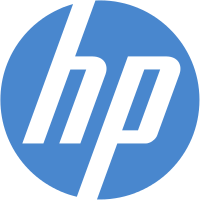
Before I go on I would like to draw the attention to the excellent translators working at TYPO Berlin. Every year I am so impressed by the fabulous job they're doing, and I sometimes fear their contribution doesn't get enough praise. TYPO Berlin being a bilingual conference with presentations in both English and German, it is made more accessible to non-German speakers thanks to the simultaneous translation to English of the German talks. And as if this weren't enough, it works both ways – German speakers also have the option to listen to the English presentations in German for a more comfortable experience. The quality is top-notch, with translators on top of their game, down to accurate tonal expression. Only in the very technical Adobe CS4 overview on Friday did I detect at most two or three less successfully translated technical terms. They really are the unsung heroes of the conference.

TYPO visitors get down and dirty with water colours on Joshua Davis artwork. © Gerhard Kassner
As the audience left TYPO Hall early after the less than successful presentation by Florian Fischer I had the time to look around the entrance hall. Besides the customary stands of FontShop, Bücherbogen, and the other sponsors, Joshua Davis had collaborated with manufacturer Hewlett Packard to produce large prints of artwork from his portfolio on an impressive HP Designjet Z3200 44 inch Photo Printer. Similar to his Random Assistant exhibitions those prints were laid out on a big table, and TYPO attendees were invited to join in with the fun and colour in the images. Big prints (on different paper) with the completed artwork were hanging from the wall as inspiration and for showing the quality of the technology. This interactive project nicely tied in with Davis' rallying cry in his talk to stop taking oneself so seriously and reclaim the inner child we all still have inside.
realities:united | Realities United

Jan Edler © Gerhard Kassner
Realities United was the first of two presentations focusing on architectural/urban space. Although both Edler brothers were announced, Tim was ill, so it was Jan who introduced realities:united (realU), their studio for art, architecture and technology. He started against the backdrop of kungfuSoft, a video art piece presenting an idea of how tomorrow's computer 3-dimensional interface might look and feel. The first part of the presentation showed their ideas for architecture of the future, like their Open The House and ReinRaus projects.
Large low resolution light & media facade for the Kunsthaus art museum; Graz, Austria
From there Edler moved on to their communicative display skin, a very large low resolution light & media facade for the Kunsthaus art museum in Graz, Austria. Using a matrix of 930 off-the-shelf fluorescent lamps the eastern facade of the museum was transformed into a giant screen displaying images at 20 frames per second. I was quite impressed at the speed and fluidity with which the moving images were rendered. This seminal, award-winning project jump-started a series of similar architectural media skins, and although this now provides a steady stream of high-profile projects for realities:united I had the impression Edler regretted that they were now typecast for this type of projects, like Spots, a light-and media facade installation and 18 month art program in Berlin, Germany. Nevertheless they displayed an amazing creativity for coming up with novel solutions using differen light sources and "pixel" shapes, even with varying shapes and resolution within one single project, like C4 – a project in preparation – which is an artistic multi-resolution, multi-scale light-and media façade for the Espacio de Creación Artística Contemporánea in Cordoba, Spain.
Spots, a light-and media facade installation and 18 month art program; Berlin, Germany
A remarkable concept was the temporary urban art installation and museum interim of the Museum Abteiberg in Mönchengladbach, Germany. Edler explained that the "empty" building attracted an unexpected amount of visitors in spite of the fact that it was in fact closed for renovations. The last projects shown expanded the concept of the building as a three-dimensional light fixture (a follow-up to their 2007 New York art installation Contemporary Architecture combining light and display functionality). Here the lighting inside entires building was repurposed into a spatial media display entity.
Contemporary Architecture art installation combining light and display functionality; Artistsspace, New York, USA
All these projects and many more can be viewed on the realities:united website, which uses FF DIN for its top navigation.
Jan Edler had a very pleasant delivery, calm and thoughtful. His presentation struck the right balance between eye candy and insight into the concepts and processes behind the reality:united projects. It featured some big ideas which he managed to convey very clearly. Alternating the slideshow with little movies showing the media display walls in action was a very good choice, as they gave a much more accurate impression of their impact than still images would have. The only thing that kept me bugging throughout the presentation was – what is the carbon footprint of having these huge buildings light up like Christmas trees? When you witness these extravagant displays of light and motion you really wonder why people are being urged to save energy. But that's a discussion for another time.
Nomad | Form Follows Funk

Nomad © Gerhard Kassner
From the get-go I had the impression graffiti and urban artist Nomad was quite nervous. He was supposed to deliver his presentation in German, but due to a misunderstanding he had prepared Form Follows Funk in English. Although his English was fine it seemed as if this small confusion had him ill at ease on stage.
Darryl McCray a.k.a. "Cornbread" started in 1967 in Philadelphia, USA, and is regarded as the "father of modern graffiti". © Eugene Martin
Nomad's talk was divided up in two halves. The first half was devoted to explaining graffiti and urban art, and their (shared) history. Although the overview was quite interesting and taught me new things, Nomad made a critical mistake: he didn't show any images. Tags, style, bombing, throw-ups? Kyselak, Cornbread, TAKI 183? Without any visual reference it all stays very abstract. Nomad also barely connected with the audience, mostly looking sideways and not into the auditorium.

Nomad skullrabit © Loso
It comes as no surprise that when he finally announced he was going to show his work halfway through he was met with much applause. Unfortunately by then quite a few people had already given up and left TYPO Hall. The second half of the presentation improved from then on, and the deluge of images was spiced up with Nomad's observations and anecdotes. It was interesting to see how he evolved from tagger to graffiti writer to trash artist to "fine" artist. Nomad looked more at ease, but he still had eye contact issues with the audience. This presentation had a lot more potential, and it's a pity the battle was already lost by the time we came to the second half.

Nomad tag © Bart van Kersavond
This was the end of the first (half) day. It struck me again this year that nine o'clock is really late to finish. By the time our little group arrived at the restaurant and had eaten it was past midnight. Stephen and I went straight to our hotel, to be fit for the next day of presentations.
Header image:TYPO Hall audience with moderators Donald Beekman (front) and Alessio Leonardi (background) © Gerhard Kassner









